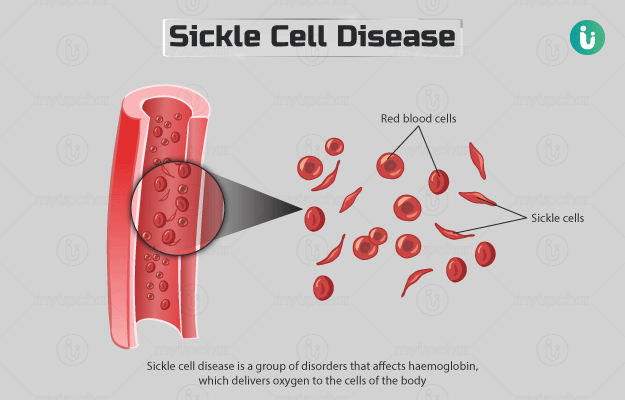What is Sickle Cell Disease?
Sickle cell disease is a group of disorders that affects haemoglobin, which is responsible to deliver oxygen to the cells of the body. It is an inherited disorder where the abnormal haemoglobin molecules called haemoglobin S, distort the red blood cell (RBCs) into a sickle or crescent shape. Sickle cells are less flexible and hence break while passing through small blood vessels. They survive for only 10-20 days compared to the normal RBCs, which live up to 90-120 days. This results in a reduced RBC count leading to anaemia.
What are the main signs and symptoms?
Sickle cell disease is present right from infancy. However, infants mostly do not show symptoms until 5-6 months of age. Symptoms are seen in early age or in the later stages of life.
- The early symptoms include
- The late symptoms include
- Acute pain in any part of the body mostly more than one spot at a time due to low oxygen supply by the blood
- Many adolescents and adults suffer from more severe chronic pain
What are the main causes?
Sickle cell disease occurs due to a genetic defect. When you inherit this gene from both parents, you suffer from sickle cell disease. If you inherit this defective gene from only one parent, then you suffer from sickle cell trait and become a carrier, showing either mild or no symptoms, respectively.
How is it diagnosed and treated?
Sickle cell is diagnosed mostly during pregnancy or at the time of birth. You are more likely to get the disease if there is a positive family history. Few tests are performed to diagnose sickle cell disease
- Complete blood count
- Haemoglobin electrophoresis to check for abnormal haemoglobin
- Urine analysis for occult infection
- Chest X-ray for occult pneumonia
Treatment is by blood and bone marrow transfusion. To prevent painful episodes, you should drink plenty of water and avoid sudden temperature changes. Analgesics are given to relieve severe pain.
















